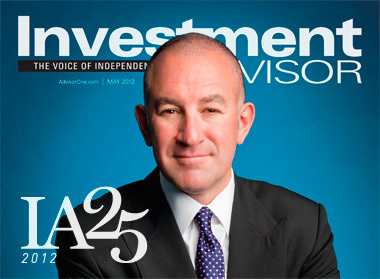That’s not the emotion, but rather the italicized Love, the Beatles-inspired Cirque du Soleil show. Which we saw last week, despite it being a Cirque du Soleil production and therefore gayer than pink Skittles®. But the music made it tolerable, and that brings us to our weekly astonishing fact.
There are 214 songs that the Beatles both wrote and recorded. (There are several dozen others that they recorded but didn’t write, or wrote for other artists, or wrote and performed live but never committed to vinyl.) They did this in 7 years. That’s a song every 12 days. And don’t forget, they were making movies during that time. And playing scores of concerts. They performed 231 shows in 1963 alone, which is not only not a typo, it flies in the face of reason. Through all the LSD use, all the junkets to Rishikesh, all the women John Lennon beat the stuffing out of, they still managed to write more than one song every couple of weeks. The overwhelming majority of these songs weren’t exactly disposable, forgettable, or simple, either. Nor did the Beatles have Pro Tools. It defies both description and plausibility. Meanwhile, it’s all we can do to write 3 posts a week without musical accompaniment.
So here it is. The only blog carnival worth a damn, the Carnival of Wealth. Where quantity is of little consequence.
Wellllll…look who’s come crawling back. Or just crawling, really. Why, it’s Vanessa’s Money. Little Miss “I’ll never submit to the Carnival of Wealth, I have my reasons.” Here, look at the insouciance:
A big CYC welcome to the kind of submitter we always have room for here: a 20-something chick who writes about something other than how far in debt she is and what her significant other is studying in grad school. Vanessa does have some debt on her personal balance sheet, but it’s the good kind. The means-to-a-tangible-financial-end kind. She has that Québécoise habit of using spaces instead of commas in numerals with more than 3 digits, but aside from that trifling point her post is nails. Vanessa is the only personal finance blogger we’ve ever seen who took out student loans and then lived below her means and invested the loans, instead of buying trips to Cancún. What college kid is resourceful enough to see student loans as free capital? Only one that we know of.
Now that we’ve got the Prodigal Daughter’s post out of the way, we welcome Jason at Hull Financial Planning yet again. Here’s a Zen koan of a subheading for you:
Are we creating an emergency by not investing our emergency fund?
You people who insist on creating emergency funds, even when you have credit card debt and student loan debt incurring interest, always seem to see that emergency fund as inert. Static. Something that just sits there until Fortune smiles on you in the form of a meteorite crashing through your roof. Now, the universe has finally given you justification for creating that emergency fund, and withdrawing from it. Rejoice!
Let’s examine this like something other than idiots. If teenage Vanessa can figure out that a wad of cash can be used to grow itself, why can’t adult you do the same thing with an emergency fund? That’s what the late Senator William Roth invented his IRAs for. Or if you’re Canadian, what Jim Flaherty invented TFSAs for.
Believe it or not, we’d prefer to run a scorn-free CoW every week. The problem is the lousy submissions. But starting off a Carnival of Wealth with Vanessa, Jason, and Paula Pant at Afford Anything makes it difficult to say anything impertinent. Paula saves a ton of her money, a higher ratio than you probably think possible, but that isn’t enough. She has a knack for using Aristotelian reasoning in ways we’d never have thought of ourselves:
“savings” is deferred spending[…]
But spending later won’t get you closer to financial freedom.
Tell that to the huddled masses, please. Oh wait, that’s what we’re doing right here. Paula explains what you need to do beyond deferring spending in order to build wealth. The answer is hiding in plain sight.
Good Lord. Have we finally scared off every last incompetent personal finance blogger? Are we left with nothing but gravy? Cameron Daniels at DQYDJ.net has an adjustable-rate mortgage, something we rail against, yet manages to make it work. He pays his bills as late as possible, which might mean little in the short run but it does cultivate a habit of not letting other entities enjoy his money interest-free. (Why do you think TV offers always say “Allow 4-6 weeks for delivery” once they get your payment?) Cameron also shifts effortlessly between homonyms in this post without making a mistake.
Justin at Root of Good is experiencing a more interesting retirement than he might have initially expected. His stock investments took a $60,000 pounding in a matter of mere weeks, but Justin isn’t panicking. Those stocks have decades to rebound.
Andrew at 101 Centavos asks what’s looking more and more like a rhetorical question: Is the Keystone XL pipeline ever going to get built? Fun facts: You probably didn’t know this, but the thing is already mostly in operation. There’s only one phase that’s the sticking point, and it’s supposed to go through some of the sparsest land in the lower 48. But among other issues, the Koch Brothers might benefit from it, so Phase 4 is therefore bad. (This is how knee-jerk environmentalists phrase things, isn’t it? Are we doing this right?)
Finally, how about some Pauline Paquin at Make Money Your Way? Oui, s’il vous plaît. If we ever did a feature called Mastermind of the Month, she’d be permanently in the running. Pauline has led a life that our (F)RotM honorees can’t even conceive of, let alone live. Pauline has visited 70 countries (including a motorcycle trip from Norway to Morocco), quit full employment years ago before it forever captured her soul, runs multiple blogs and is now living on the beach in Guatemala. But as far as we know, at no point did she say, “You know what? I need some direction. Why don’t I go back to college, it’s easy and I know where everything is.” Or “I’ve been dreaming of a $75,000 destination wedding since I was a little girl and nothing is going to stand in my way.” Fortunes are made every day. Pauline is making hers as we speak. What are you doing?
And…a pop-up to the pitcher for the 27th out. We no longer have to worry about jinxing it. We finally did it. A perfect CoW. Not a dud anywhere. You can thank the submitters for making this worth everyone’s while.
Then you can thank us for making it possible. Check us out on Investopedia, and if you were ever going to download the Stacking Benjamins podcast, you should make it this week. We nailed it on there, too. Every week, in fact. And every day here. New Anti-Tip of the Day every day, new posts Wednesday and Friday, and another one of these Monday. Thanks again.






